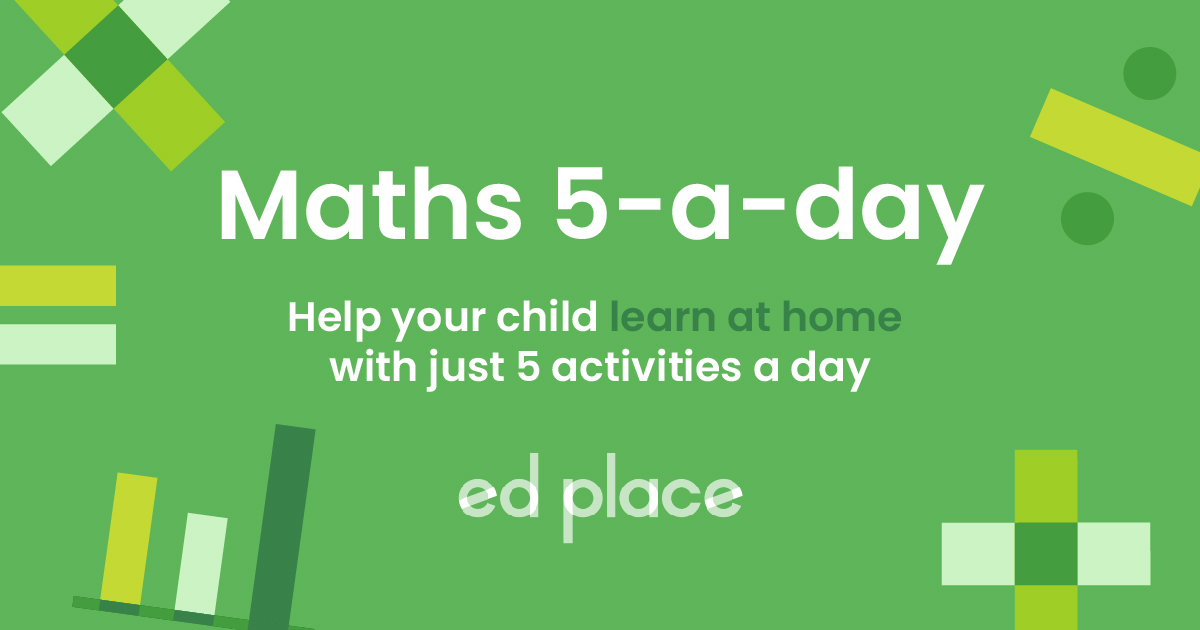
EdPlace's Year 6 Home Learning Maths Lesson: Long Multiplication
Looking for short lessons to keep your child engaged and learning? Our experienced team of teachers have created English, maths and science lessons for the home, so your child can learn no matter where they are. And, as all activities are self-marked, you really can encourage your child to be an independent learner. Get them started on the lesson below and then jump into our teacher-created activities to practice what they've learnt. We've recommended five to ensure they feel secure in their knowledge - 5-a-day helps keeps the learning loss at bay (or so we think!).
Are they keen to start practising straight away? Head to the bottom of the page to find the activities.
Now...onto the lesson!
Long multiplication sounds daunting, doesn't it? And long!
Actually, this method is shorter than the method you may have learnt at school. In the past, students were required to break the problem down into about 9 different steps! Thankfully, this guide will teach you how to multiply 4-digit numbers by 2-digit numbers, using the method of long multiplication. By this end of this guide, we're confident that you're child will be able to:
1) Understand how to multiply any whole 4-digit number by a whole 2-digit
2) Apply this method to independent work
3) Explain to you how they completed a long multiplication question!
Step 1 - Understand key terminology
Before we start this lesson, check your child understands the following key terms:
Multiply – To make a number larger by repeatedly adding it.
Long multiplication – The name of the formal written method we use (which isn’t so long after all!)
Place holder – The digit 0. In our working out, we write 0 to hold the place in a column to demonstrate that there is no digit there. The value is 0.
Step 2 - Check your child's prior understanding
Your child will need to know their times tables up to 9 × 9. All the numbers we multiply using this method are single-digit numbers, which is why 9 × 9 is the highest multiplication they will need to know. Your child will also need to understand place value – the columns from the ones column up to the hundred thousands column:
Step 3 - Get to grips with the long multiplication method
Long multiplication is basically multiplying individual digits lots of times! We just need to remember the order in which to multiply the digits. Have a look at the following example together:
When multiplying, we always start from the furthest right column, like in addition and subtraction. In this case, we start with 8 × 5 (the red arrow). The steps have been colour coded, to make them clearer as we work through them.
Step 1: 8 × 5 = 40. We write the 0 underneath the 8 in the ones column. We carry the 4 across to the tens column, above the digits. This is because the digit 4 represents 4 tens.
Step 2: 8 × 3 = 24 (or 8 × 3 tens is 24 tens). However, we also have the 4 in the tens column that we carried across in step 1, so we need to add this to the answer: 24 + 4 = 28. Once we have added it, we cross it off, so that we don't need to worry about it anymore. The digit 8 goes in the answer in the tens column, next to the 0. We carry the 2 across to the hundreds column, above the digits again so it is out of the way! This is because the 2 represents 2 hundreds.
Step 3: 8 × 2 = 16. But wait, we still have the 2 above the hundreds column to add on: 16 + 2 = 18. Cross off the 2 so we know we’ve done it! Now, 8 goes in the hundreds column in the answer and we carry the 1 across to the thousands column, above the digits.
Step 4: 8 × 7 = 56. Add on the 1 above the thousands column and cross it off: 56 + 1 = 57. There are no more digits to multiply so we can just write the number 57 in the answer, like in the picture above. Initially, your child may feel overwhelmed. However, mastering this skill is the hardest part! Once we can do that, the next step will be easy because it’s the same thing again! Have a look at the picture below:
We need to cross off the 8 because we have multiplied that, so now we can forget about it!
In the picture above, we did 7,235 × 8. Now, we are going to do 7,235 × 40.
Because it is 40 and not 4, we put a place holder in the ones column in the answer (in yellow). This is because we won’t actually be multiplying 4 by 5; it’s actually 40 × 5. But for this article, I’m going to call it 4 because we’ve put the 0 in place.
Step 1: 4 × 5 = 20. The 0 goes in the answer in the tens column, next to the place holder. The 2 goes in the tens column, above the digits.
Step 2: 4 × 3 = 12. Add on the 2 that we carried across: 12 + 2 = 14. Put the 4 in the answer in the hundreds column and carry the 1 to the hundreds column.
Step 3: 4 × 2 = 8. Add on the 1 that we carried to the hundreds column. 8 + 1 = 9. Put the 9 in the answer. There is nothing to carry across because 9 is a 1-digit number.
Step 4: 4 × 7 = 28. There is nothing to add on to 28 and nothing left to multiply, so we just write 28 in the answer.
Hopefully, this felt easier for your child the second time around! Now for the final step: add the two numbers together, like in the picture below:
Our final answer is 347,280.
Step 4 - Putting it into practise...
Now have a go at these examples together:
a) 4,727 × 53
b) 2,536 × 84
Challenge questions:
c) 9,878 × 79
d) 9,080 × 76
Step 5 - Give it a go...
Now that you’ve covered this lesson together, why not put this to the test and assign your child the following multiplication activities in this order? All activities are created by teachers and automatically marked. Plus, with an EdPlace subscription, we can automatically progress your child at a level that's right for them. Sending you progress reports along the way so you can track and measure progress, together - brilliant!
Activity 1 - Mental Calculations (1)
Activity 2 - Multiply Two-Digits Numbers by Three-Digit Numbers
Activity 3 - Multiply a Three-Digit Number by a Two-Digit Number
Activity 4 - Multiply Four-Digit Numbers by Two-Digit Numbers
Answers:
a) 250,531
b) 213,024
c) 780,362
d) 690,080
Keep going! Looking for more activities, different subjects or year groups?
Click the button below to view the EdPlace English, maths, science and 11+ activity library
All English, maths and science from Year 1 - GCSE









